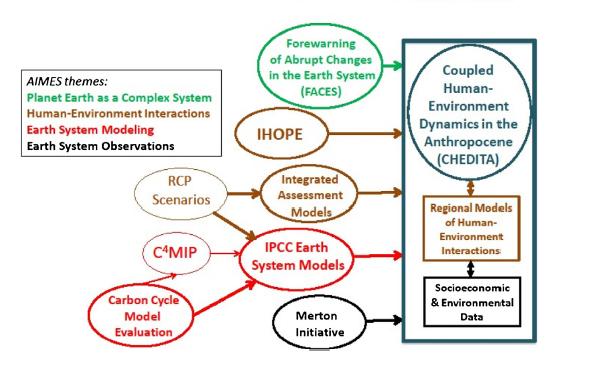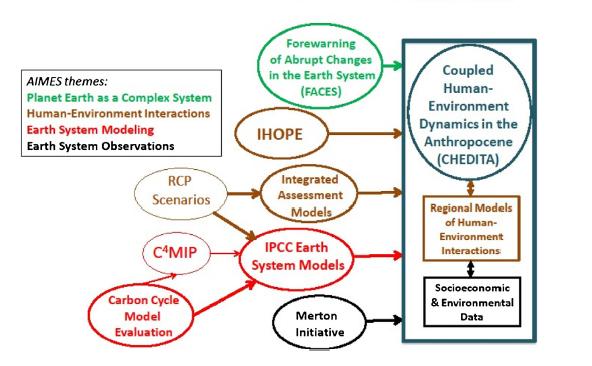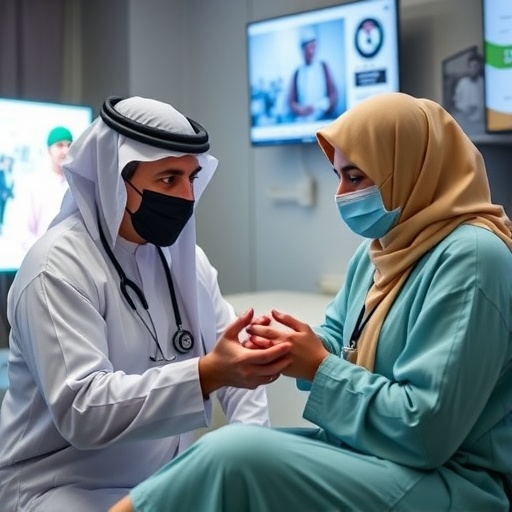
Credit: Image courtesy of Sander van der Leeuw and Anthropocene
Phoenix, AZ — Humankind may still prove to be the planet's best friend or its worst enemy, advise global earth science leaders at Arizona State University. But those in this field can no longer limit their studies to the recent past and present times, they say, nor view modern humans as outside agents convoluting a more natural order.
By now, "the natural and the human-made are meshed together in a cyborg whole," explains Sander van der Leeuw, foundation professor at ASU's School of Human Evolution and Social Change (SHESC) as well as the ASU School of Sustainability.
For he and fellow SHESC professor Michael Barton, this means that earth science systems must also evolve, taking into account not just data from fields such as geology, meteorology, oceanography and astronomy, but also from economics, governance and other distinctly human social dimensions that can reshape the planet just as dramatically.
"Whenever any change occurs, man-made or natural, for better or worse, it alters in real time what options exist and what approaches will steer us toward positive futures," says van der Leeuw. "But the social scientists and nature scientists looking for those changes on their own sides of the aisle rarely have access to the same culture, tools or trade languages."
To that effect, van der Leeuw and Barton have traveled the globe under the United Nation's Future Earth program in order to develop a multi-year science plan bridging these once-distinct fields of study. This includes establishing shared computational software, development and implementation standards, and even common research agendas.
Their goal is not to minimize or homogenize away pure, traditional earth science, such as the historic Global Analysis Integration and Modeling (GAIM) effort, which measures the impact of carbon cycles, or the original AIMES 1.0 methodology for tracking physical and biological changes in land and ocean systems. Both models worked so well that they became scientific standards still used in Intergovernmental Panel on Climate Change (IPCC) Assessment Reports.
But van der Leeuw and Barton, leading international teams along with Peter Cox at Exeter University, are focusing on overlaying a new methodology that will expand the field's understanding of these naturally-existing complex adaptive systems with human networks that are also subject to societal changes, such as in demography, the internet and the global economy. It's being referred to as AIMES 2.0.
This push is in tandem with many ongoing efforts such as the IHOPE project, which uses real archeological and paleo-environmental models of change, and applies them to modern settings on a long-term trajectory.
Like a data-driven version of The Sims, AIMES 2.0 researchers work on how to keep the "game" going and its characters (us) alive and thriving for as long as possible, despite constant variables such as trade interruption, drought, population boom, and regime change.
This approach is already gaining global momentum and adoption as part of Future Earth and The World in 2050, a project that is supported by funds from NASA (through Columbia University), the Stockholm Resilience Center, and the International Institute for Applied Systems Analysis in Vienna.
"The undercurrent you see in all of these efforts is a move from explaining and learning from the past, to anticipating and learning for the future," says van der Leeuw. "We'll be monitoring cities and other densely-populated, accessible areas as possible tipping points, but also our tropics, high altitude, and blue-water regions, and the points where they all intersect. It all matters in a truly global earth science system."
###
About Sander Van Der Leeuw
In July 2001, van der Leeuw was appointed Secretary-General of the French Conseil National de Coordination des Sciences de l'Homme et de la Societe (National Council for the Coordination of the Humanities and Social Sciences) and was also appointed as Deputy Director for Social Sciences at the CNRS (2002-2003) and at the National Institute for the Sciences of the Universe. In 2003, he was appointed chair of the Department of Anthropology at Arizona State University in the US, where he became Founding Director of the School of Human Evolution and Social Change and subsequently Chair of the Consortium for Biosocial Complex Systems and Dean of the School of Sustainability. In 2012 he was awarded the "Champion of the Earth for Science and Innovation" prize by the United Nations Environment Program.
ASU affiliations and appointments:
Foundation Professor, School of Human Evolution and Social Change, College of Liberal Arts and Sciences
Foundation Professor, School of Sustainability, Julie Ann Wrigley Global Institute of Sustainability
Distinguished Sustainability Scientist, Julie Ann Wrigley Global Institute of Sustainability
Director, ASU SFI Center for Biosocial Complex Systems
Professor, Global Biosocial Complexities Initiative
Faculty, School for the Future of Innovation in Society
Professor, Center for Social Dynamics and Complexity
About Michael Barton:
Michael Barton is a geoarchaeologist whose expertise includes long-term dynamics of socioecological systems, hunter/gatherers and small-scale agricultural societies, Quaternary landscapes, geospatial technologies, computational modeling, complex systems science, evolutionary theory, lithic technology. Barton is Director of the interdisciplinary Center for Social Dynamics and Complexity, and heads the Graduate Faculty in Complex Adaptive System Science.
ASU affiliations and appointments:
Senior Sustainability Scientist, Julie Ann Wrigley Global Institute of Sustainability
Professor, School of Human Evolution and Social Change, College of Liberal Arts and Sciences
Director, Center for Social Dynamics and Complexity
Affiliated Faculty, Center for Biodiversity Outcomes, Julie Ann Wrigley Global Institute of Sustainability
Head of Graduate Faculty, Complex Adaptive Systems Science
Affiliated Faculty, School of Earth and Space Exploration
Media Contact
Aaron Pugh
[email protected]
480-727-6577
@ASU
http://asunews.asu.edu/
############
Story Source: Materials provided by Scienmag





